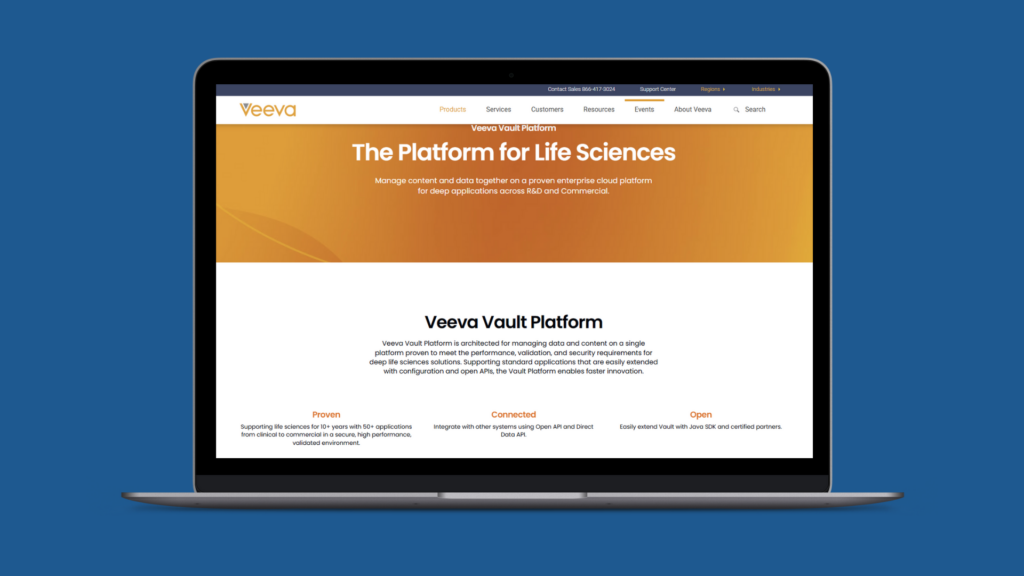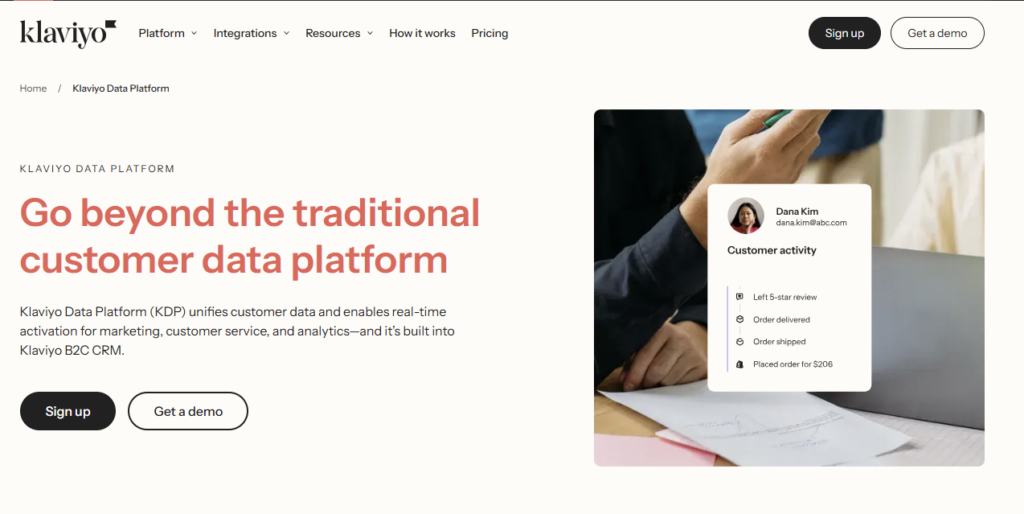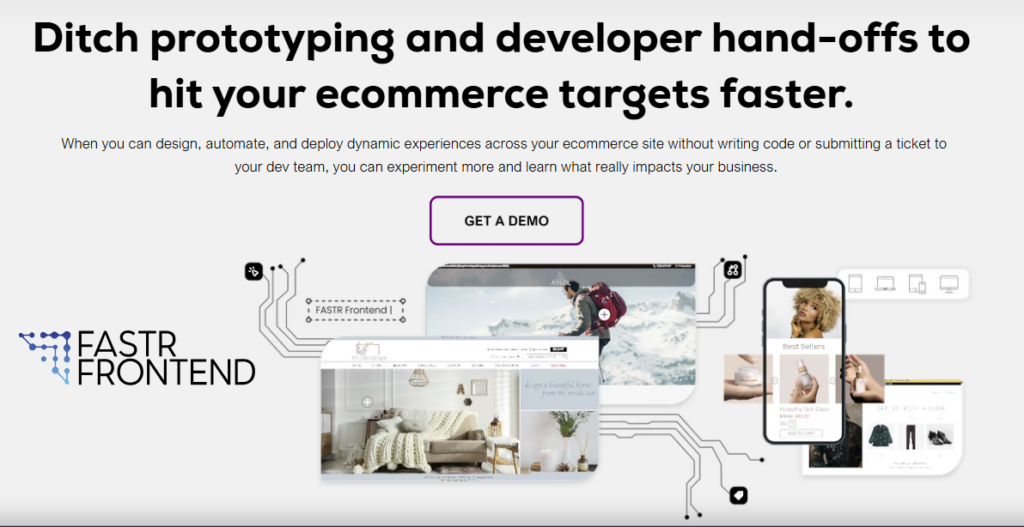
Imagine walking into a store, not as a stranger, but as a known entity, your preferences, past interactions, and unspoken desires woven into a seamless tapestry of understanding. This is no longer a fantasy but a reality crafted by software companies unifying data to bridge digital and physical worlds. The result? Immersive in-store experiences that don’t just sell products but forge emotional connections, turning casual browsers into loyal advocates.
At Time & Space, we believe this shift isn’t just about technology—it’s about redefining commerce as a human-centered narrative. Where others see data as a tool, we see it as the foundation for storytelling that resonates emotionally, creating experiences that are unforgettable and uniquely personal.
Software companies like Veeva Systems, Klaviyo, and Fastr are revolutionizing retail by unifying data to create immersive in-store experiences that forge emotional connections. These innovators combine data precision with human experience, turning casual browsers into loyal advocates. They create memorable moments that drive sales and redefine commerce. Through strategic alignment of audience insights, omnichannel execution, and analytics, these platforms deliver both functionality and measurable impact—ultimately transforming the in-store experience.
The Puzzle of the 360-Degree Customer
In the early days of digital marketing, data was a blunt instrument—scattered across silos, it offered fragmented glimpses of customers, like pieces of a jigsaw puzzle. Supply chain logs, website clicks, service queries, and marketing campaigns each held clues, but without a unified view, companies were blind to the full customer story. This was especially acute in B2B, where small, diverse groups of decision-makers required tailored messaging.
The solution was a 360-degree customer view—a single, holistic profile capturing every interaction, from a website visit to an in-store demo. Achieving this demanded more than technology; it required a cultural shift. Leaders rallied stakeholders from logistics, marketing, and IT to align on a shared vision, breaking down silos to create a data strategy focused on business outcomes. The result? A customer experience that feels intuitive and an in-store seller experience that empowers staff with confidence and empathy.
Veeva Systems: Orchestrating B2B Healthcare Connections
Founded in 2007, Veeva Systems serves pharmaceutical companies managing complex relationships with healthcare providers. Its B2B clients faced a challenge: data was trapped in disconnected systems, with marketing teams unaware of supply chain delays and sales reps lacking insights from online webinars. In-person demos at medical conferences felt generic, despite the high stakes—a single provider could influence millions in drug sales, each with unique needs shaped by specialty, region, and patient demographics.

Veeva’s leadership developed Veeva Vault, a platform that integrates supply chain, marketing, and CRM data into a single interface. The system’s granularity tracks every touchpoint, from a doctor’s webinar attendance to in-store demo requests, enabling tailored outreach. To make this accessible, Veeva used creative formats like interactive infographics and AR-driven product demos, turning dense compliance data into engaging narratives. At conferences, reps used tablets to showcase personalized drug trial results via animations, creating a multi-sensory experience.
In 2024, Veeva piloted this with a mid-sized pharma client at a US medical conference:
Reps felt like trusted advisors, fostering a community-like atmosphere. Optimizing Veeva’s capabilities through audience segmentation and omni-channel strategies, ensures every interaction feels bespoke. Analytics close the loop, measuring engagement to refine future touchpoints, making reps not just advisors but storytellers of a brand’s promise. Our take? Veeva’s success isn’t just about data integration—it’s about creating a dialogue that feels less clinical and more human.
Klaviyo: Personalizing B2C Retail at Scale
Klaviyo, a Boston-based marketing automation platform founded in 2012, transforms B2C retail by unifying fragmented data from online purchases, social media interactions, and in-store POS systems into a single Customer Data Platform (CDP). With over 350 integrations, including Shopify and Square, Klaviyo’s AI-driven analytics predict customer behavior, enabling retailers to deliver personalized in-store experiences. Staff access customer profiles on tablets, recommending products based on online browsing or cart activity, while drag-and-drop tools create QR-coded offers linked to tailored discounts or product details, enhancing engagement.
Data-backed results demonstrate Klaviyo’s impact:

Klaviyo seamlessly connects digital and physical retail by unifying customer data, enabling personalized in-store experiences. Equipped with real-time insights from Klaviyo’s Customer Data Platform, staff act as curators, tailoring recommendations to individual preferences, which cultivates a sense of community. Our belief: personalization isn’t enough—it must be paired with a narrative that makes customers feel seen, a nuance often missed in data-heavy approaches.
Fastr: Redefining B2B Publishing with Interactive Content
Fastr, a Denmark-based software company founded in 2006 with a UK presence, powers digital publishing for B2B media companies, creating interactive content for advertisers. Its clients struggled to translate online engagement—like glossy digital magazines—into in-person experiences that drive ad sales. Advertisers, often small businesses, needed tangible ROI, but disconnected data meant online analytics didn’t inform pitches, leading to generic approaches.

Fastr’s Creator platform unifies online engagement metrics, such as clicks and views, with customer interactions, feeding into a 360-degree advertiser profile. The innovation lies in delivery: interactive content, like shoppable catalogs and animated demographics, makes data engaging. Sales teams can access these insights on mobile devices, tailoring pitches to advertisers’ online behavior, such as interest in video ads.
For example, at a trade show, Fastr’s platform could enable reps to showcase real-time engagement data on tablets, with animations explaining audience demographics. Clients using Fastr have reported:
Reps become storytellers, creating a collaborative, workshop-like atmosphere. Fastr’s platform isn’t just about data—it’s about crafting stories that make advertisers feel empowered.
Leading Through Data and Experience
Time & Space recognizes that exceptional customer experiences are built on a foundation of unified data and strong seller experiences. Breaking down organizational silos between marketing, IT, and logistics creates a comprehensive view of the customer journey. Success requires more than just technology investment – it demands a collaborative culture that embraces innovation.
The marketing landscape is evolving rapidly. By 2025, augmented reality will reach over 100 million users while social commerce expands to 120 million shoppers. We are no strangers in helping organizations navigate this convergence of data and experience through strategic cross-media platform integration. This approach transforms customer insights into compelling narratives that resonate across digital and physical touchpoints.
The focus extends beyond pure data mechanics to create genuine emotional connections. Through creative formats like AR, animations, and interactive content, businesses can craft memorable experiences that build lasting relationships between brands and their audiences. This human-centered approach to data storytelling drives meaningful transformation and business growth.